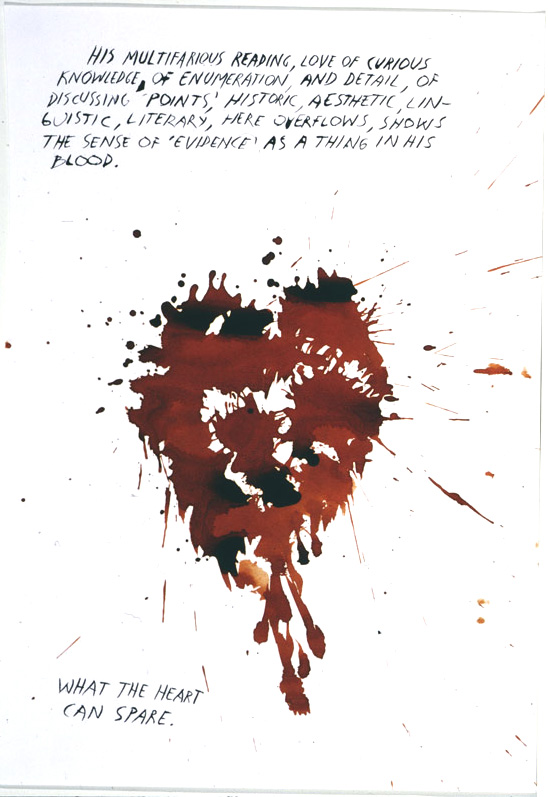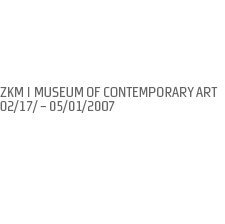
 Imagination Becomes Reality Conclusion Imagination Becomes Reality Conclusion

 Works in the Exhibition | Works in the Exhibition |  Text Text


Raymond Pettibon: No Title (His Multifarious Reading... ), 1997
Photo: courtesy Goetz Collection
Raimund Koch, New York
Works in the Exhibition

No Title (Go, teach all ... ), 1990, Ink, Watercolor on paper
No Title (His Multifarious Reading... ), 1997, Ink on paper
No Title (There was only... ), 1991, Ink, pecil on board
No Title (If I could...), 1984, Ink, crayon on paper
No Title (We'll do...), 1984, Ink, crayon on poster
No Title (Clean up the...), 1984, Ink, crayon on paper
No Title (We were led...), 1991, Ink, Watercolor on paper
No Title (And now I...), 1990, Ink on paper
No Title (The he you...), 1993, Ink, Watercolor on paper
No Title (Baby, it's you,...), 1992, Ink and Watercolor on paper
No Title (A world created ... ), Ink on paper
No Title (Marlboro Man ...), Ink on paper
No Title (Amen, one night ...), 2000, Watercolor, Ink on paper
No Title (The memory of ...), 1997, Ink, Pencil on paper
No Title (I had not ...), 2000, Watercolor, indian ink on board
No Title (From earth to ...), 2000, Watercolor, Ink on paper
No Title (To my imaginary ...), 2000, Watercolor, Ink on board
No Title (There is no ...), 2000, Watercolor, Ink on paper
No Title (They ever go ...), 2000, Watercolor, Ink on paper
No Title (Neoconservatism never really), 2005, Ink, Feltpen on paper
Sunday Night and Saturday Morning, 2005, single-channel video (color, sound), 16'45"

Text

The work of Raymond Pettibon, who is likewise based in California, belongs to a quite different pictorial world. His drawings, executed in pen and ink, colored or lead pencil, felt tip pen, or watercolor, and generally untitled, take their cue from the kind of comic-based imagery introduced into the fine arts by Roy Lichtenstein in the late 1950s. Whereas Lichtenstein made few changes to the originals, Pettibon approaches comic-strip imagery in abstract terms, as in the examples shown here, which date from 1984 to 2005. He dissolves the unity of its two interdependent elements - text and image - and addresses issues of a frequently political nature, including daily life in the U.S.A. and such population groups as the surfers and hippies of California. As one critic has noted: "The viewer of Pettibon’s works must know such names as Charles Manson, Sharon Tate, Patty Hirst, Lady Bird (Johnson), Lee Harvey Oswald, and many more, and be aware as well of the look of the faces they bear or bore. The viewer has to know the music of The Grateful Dead, the texts of various songs, certain comic strip figures and film personalities, simply for a basic understanding of the context to which Pettibon refers."(1) The artist produces his works in extensive series that hint at overall (narrative) contexts, not least through the repetition of certain figures and other motifs. The items in the series are nonetheless self-sufficient, and individual works or groups of them can be found distributed among various collections.
(1) Andreas Hapkemeyer, Raymond Pettibon: The Pages Which Contain Truth Are Blank, in Raymond Pettibon: The Pages Which Contain Truth Are Blank, exh. cat. Museion, Bolzano, and Galleria d'Arte Moderna, Bologna 2003, p. 72.
Text excerpt »Images are generated by a gaze searching for new and personal insights. They are images of those gazing at the world« (Author: Stephan Urbaschek), Exhibition Catalogue Imagination Becomes Reality Conclusion

|





